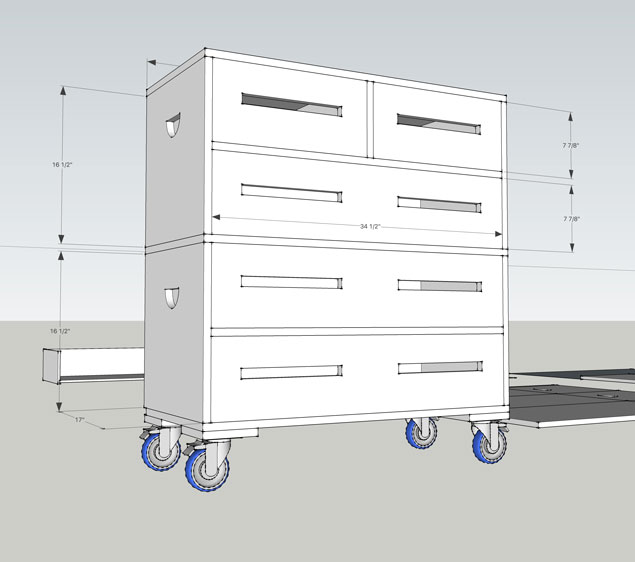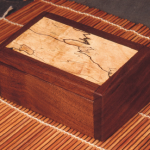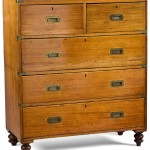We may receive a commission when you use our affiliate links. However, this does not impact our recommendations.
While there are a dozen good ways to design a piece of furniture, I can write intelligently only about my own methods. I designed my first piece of furniture in 1993 and have – surprisingly – stuck with the same basic technique for the last 23 years.
It doesn’t involve formulas or ratios (though I believe those also work). Instead it relies on what I was trained to do as a newspaperman: observe, synthesize and refine.
Why am I telling you this? Whenever I read about a piece of furniture in a magazine that I admire, I am just as curious about the design process as in its construction. But there’s never enough ink to cover both “how-to” and “why.”
Right now I am constructing two pieces for Popular Woodworking Magazine that are original designs. I’ve worked out all the design details and thought I would lay out my process, from start to finish, in a series of blog entries. You might find it helpful, or you might think I’m full of crap; either way, you’re right. (Note: The image above is about one-third baked. It’s not the final piece. You’ll have to keep reading to see the end design.)
The Idea for the Chest
My family has a long history with Campaign Furniture (I even wrote a book about it three years ago). My parents and grandparents both built it and collected it. So it’s always been a part of me. In college I discovered Danish Modern furniture, and I spent time between classes at a Scandinavian Design store in Evanston, Ill., whenever I needed a break from adverbial nouns and libel laws.
The more I read about both styles of furniture, the more it became obvious there was a link between the two styles. Danish designers such as Kaare Klint studied and adapted English joinery and forms to create what would become Danish Modern.
I decided to build a piece that linked the two styles, but I didn’t want it to look like turducken. Where to begin?
Observe: The Historical Record
Most young journalists tend to rush to the writing part when they should do more research and reporting (I was that way at first). As my newswriting professor said: “If you do enough reporting, then the story will write itself.”
I feel the same way about designing furniture. There’s a pregnant urge to get to the construction part and gloss over the deep research that leads to informed designs. I’m sure there are people who can cook up fully formed novels and furniture masterpieces like Saul becoming Paul in the desert. I don’t work that way.
So I begin the design process with a period of sensory overload. I read everything I can get my hands on about the topic. I spend hours at Prices4Antiques.com (you can get a free membership by joining the Society of American Period Furniture Makers (SAPFM). I troll 1stdibs.com and a dozen other places. Heck, even a good search on Google Images can keep you busy for days.
While the images are great, there’s nothing like experiencing furniture in the lignum. Be like Mark Firley at thefurniturerecord.com and stop by local antique stores or museums at home or when you travel. Take photos. Take notes. Carry a tape measure. I know this sounds boring but it pays off.
What are you looking for? Patterns and outliers. Every furniture style has a language. You’ll start to see dialects, too. Ohio, Western Shaker and vernacular English furniture all share similarities that are not an accident. You might not be able to suss out why there are connections, but you will see them.
I stare at these images until I can start predicting what the next one will look like. And I will start to draw quick thumbnail sketches of the ones I like – nothing fancy, just sketches that take 45 seconds or less to show you what’s important about a piece.
So to give you a feel for my own research, I’ve included a gallery of images of Campaign chests here for you to look at. These represent the range of pieces I looked at, but not the volume. I probably looked at 10 times as many images. But you’ll get the idea.
After looking at these chests, I was ready to look at some Danish Modern ones. And that’s where we’ll go during the next installment.
— Christopher Schwarz
Here are some supplies and tools we find essential in our everyday work around the shop. We may receive a commission from sales referred by our links; however, we have carefully selected these products for their usefulness and quality.










Thank you. Looking forward to the follow-up servings of the recipe for designing recipes, and the recipe for the campaign chest, coming to be, being re-worked, and finally “baked”. Taking your cue that good design process involves a stringent distillation of harvested source material, I hope you’ll include a parallel peek at the making of the design recipe for the other original piece you’re making for Popular Woodworking Magazine. Comparative cuts here would sharpen the blade of what promises to be a handy, well-designed, tool.
Chris, “double blade” ?
I look forward to following this blog. I’m currently (glacially) building a campaign secretary based upon your book. I am fortunate to have 18″ wide Camphor boards for the cases (which are sized and dovetailed). I’m starting on the web frames and drawers. Over the next few weeks, I plan to make the mortises for the hinges, pulls and lifts. Following your advice, I have acquired all the brass hardware (whew!). My rate of advance is such that I’m glad that no one but me is waiting for this piece to be finished.